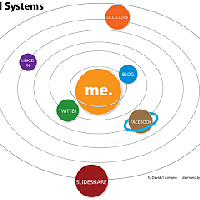Home
About Us
Page 2
The organizers of the program hopes for the outcome of the project to have a substantial impact bioequivalence policy development for generic orally inhaled products.
|
|
Furthermore, the initiatives included under this funding opportunity announcement also intends to achieve the following objectives:
a) Develop a quality-by-design tool that could be utilized to improve the performance of orally inhaled drugs during the product development phase.
b) Determine accurate dose predictions.
c) Set clinical relevant aerodynamic particle size distribution specifications to ensure product quality, for these drug/device combination products.
To support these initiatives, the USFDA is ready to administer funds in the amount of $150,000.
The institutions and organizations who will be deemed eligible to submit an application under this program are the following:
a) Private and Public Non-profit entities
b) State and Local Governments
c) Indian Tribal Governments and Organizations
d) Faith-based Organizations
e) Community-based Organizations
f) Institutions of Higher Education
g) Private and Public Colleges and Universities
h) Independent School Districts
The Department of Health and Human Services, the mother agency funding the Predictive Lung Deposition Models for Safety and Efficacy of Orally Inhaled Drug Products Program, is the nation's leading agency for protecting the health of all Americans and providing fundamental human services to all.
Predictive Lung Deposition Models for Safety and Efficacy of Orally Inhaled Drug Products Program.
Back to Page 1
About The Author Iola Bonggay is an editor of TopGovernmentGrants.com one the the most comprehensive Websites offering information on government grants and federal government programs. She also maintains Websites providing resources on environmental grants and grants for youth programs. |
Additional Resources
category - Health Grants
Modeling Social Behavior Grant Program
Telehealth Resource Center Grant Program
Health Resources and Services Administration: HIV Care Grant Program, Part B
Developing and Strengthening Services and Systems that Support Family Cohesion and Respond to the Separation of Children in Democratic Republic of Congo
Follow @topgovtgrant
Social Entrepreneurship
Spotlight
Social Enterprise Version 2.0

Midsize businesses are tapping into the social business market because large companies do not need the help of start-ups to create a “social technology stack.” But a social business stack cannot generate revenue by itself.
